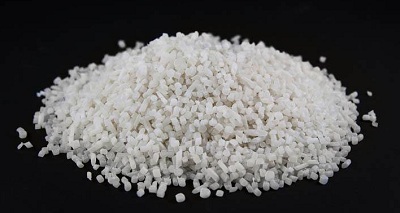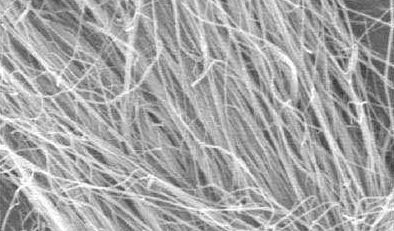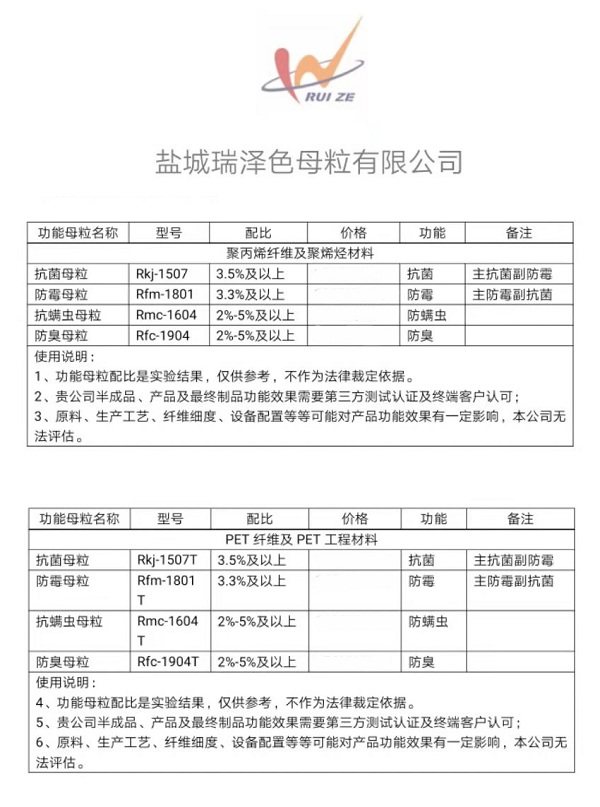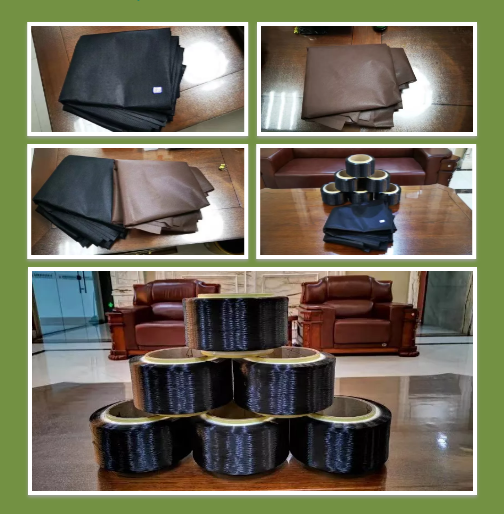



Antibacterial function
Method of achieving antibacterial function
In recent years, the increase in global atmospheric temperature and the increase in population density brought about by urbanization have made bacterial infection one of the serious social problems.
Clothing and textiles are important channels for bacterial infection and cross-infection. In order to control the growth of bacteria and prevent the spread of bacteria, many fiber materials have added antibacterial substances to impart antibacterial properties to the fibers themselves.
At present, antibacterial modification methods have been widely used in textiles, and the preparation methods thereof include a fiber modification method and a fabric finishing method. There are three ways to prepare and develop specific technologies:
01
Masterbatch spinning
The masterbatch spinning method is to uniformly mix the antibacterial masterbatch and the raw material in a certain ratio, and then obtain a fiber having an antibacterial effect by melt spinning, which belongs to the pre-spinning addition.
The advantage is that the functional fiber obtained in this way enables the antibacterial agent to not only exist on the surface of the fiber, but also can be uniformly distributed in the fiber, and the obtained fiber has stable and long-lasting antibacterial properties.

02
Fiber blending
The antibacterial textile fiber and the ordinary fiber or cotton are mixed into a certain proportion to make an antibacterial textile, which increases the health factor without affecting the feel and comfort of the textile, and greatly corresponds to the antibacterial and deodorant demand of modern life.
Advantages: It does not change the characteristics of the original fiber, solves the problem of adding the proportion of the antibacterial agent, is simple and convenient, and is suitable for most textile mills.

03
Antibacterial finishing method
The preparation method of this method is simple and convenient, and can also achieve a good antibacterial effect, and meets the EU RoHS requirements. The surface of the textile material is formed into an antibacterial layer by dipping or spraying an antibacterial agent on the surface of the fabric.
Limitations: Although the cost of this method is low, the surface is antibacterial and the short-term antibacterial effect is good.
Ruize launches antibacterial masterbatch
Through the masterbatch spinning method, the Rize antibacterial masterbatch is added to the chemical fiber, so that the fabric can obtain antibacterial, deodorizing, anti-mildew, anti-mite and other functions, and the function is durable, safe and reliable.
Rize antibacterial masterbatch application range: polypropylene fiber and polyolefin materials, PET fiber and PET engineering materials.

Click on the image to enlarge
Ruize antibacterial masterbatch practical application case

- Trust with quality -
The polyester masterbatch produced by Ruize through wet grinding technology has been approved by some polyester filament customers and non-woven customers.
Features:
1. Excellent filtration performance and good spinnability. It can spin ultra-fine denier polyester POY, FDY and staple fiber.
2, bright color, good gloss.
3, good color fastness, can reach level 4 or above. Color fastness refers to: light fastness, soap fastness, water fastness, abrasion fastness and wet fastness.
Warm reminder: The mother particle has a low melting point, and the user equipment and process need to be properly adjusted:
1. The temperature of the dry conveying pipeline should be low, and the unit of use should cancel the heat preservation of the conveying pipeline.
2. The screw temperature in the first zone should be low.

Yancheng Ruize Masterbatch Co., Ltd. mainly produces and operates: Non-woven masterbatch, Non-woven antibacterial masterbatch,antistatic masterbatch, polypropylene filament masterbatch, Polypropylene filament masterbatch, Non-woven masterbatch, polypropylene spunbond non-woven masterbatch, Polypropylene fiber masterbatch, chemical masterbatch, Non-woven masterbatch, polypropylene masterbatch, Soft hydrophilic masterbatch.